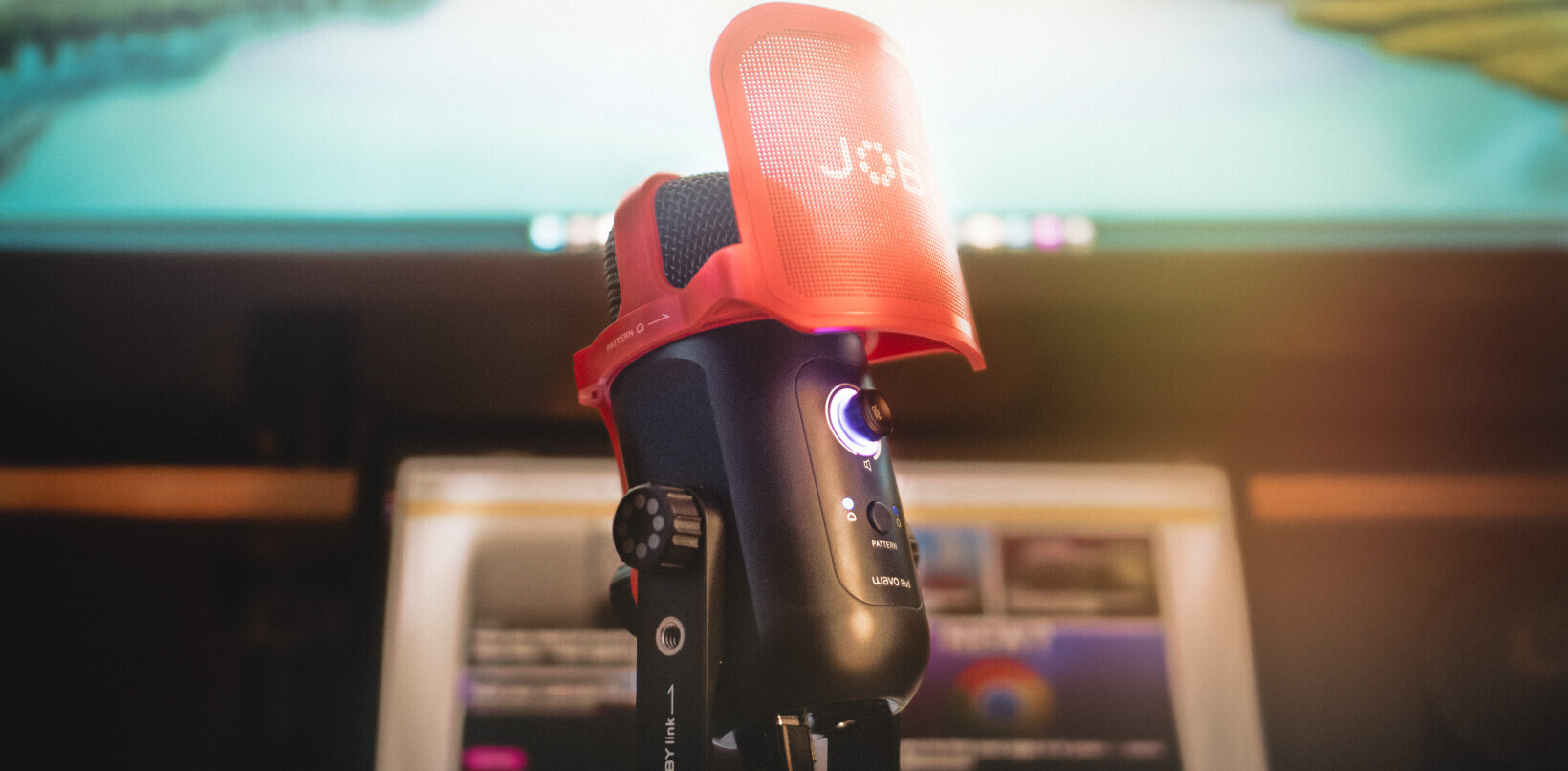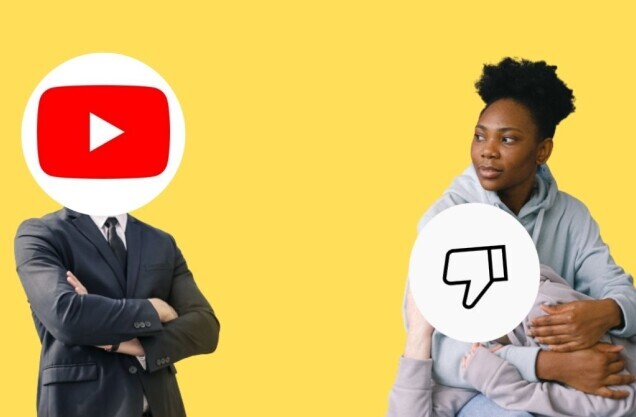
YouTube was once the place for random home-shot video skits. But the YouTube of yore has evolved to become a more sophisticated broadcasting behemoth, with live-streaming, big-brand partnerships and movie premieres very much part of its offering.
For sure, you can still watch animals do crazy things, but that’s secondary to what Google really wants its 2006 acquisition to be all about. It wants premium content, against which advertisers will pay top-dollar to have their name associated with.
With that in mind, The Next Web was at MIPCube in Cannes last week (see our full coverage here), where YouTube’s David Ripert was on hand to give a masterclass in how to produce prime online video content.
Ripert runs YouTube Next Lab for the EMEA region, a division focused on accelerating the growth and development of channels and creators on YouTube, which stemmed from its acquisition of the Next New Networks two years ago. It also launched its first UK Creator Space in the UK last year (adding to its existing studios in LA and Tokyo), a dedicated studio whereby budding YouTubers can go to receive expert guidance.
This support includes resources such as tips on writing and, visitors can access cameras and production specialists too. You probably would be allowed to take your skateboarding dog along, but that’s not the point of this particular initiative.
At MIPCube, Ripert also called on the support of Michael Stevens from Vsauce, a highly-successful YouTube channel based around education, science and other cool facts. For example, have you ever wondered what would happen if the sun disappeared?
Or, what about the age-old quandary around what would be the consequences if everybody on Earth jumped at the same time?
Through more than a little meticulous research, Stevens tasks himself with answering these questions in an entertaining and engaging way. “Its taken me a few years to hit on a format that I’m good at and the audience responds to,” says Stevens.
Stevens does everything – the research, the script-writing and full production. “The camera is close enough to my body when filming, I can reach out and refocus it with my hand,” he says. “Nobody else is in the room with me.”
He then edits, uploads and shares across the social sphere. “And if you comment on a video, I’m the one reading and responding to it,” he adds.
Today, Vsauce has somewhere in the region of 3 million subscribers, which makes it one of the top channels on YouTube. Stevens gets more views than many network TV shows can ever dream of.
It’s all about the ads…
Despite the advances in the technological realm, it seems companies can’t quite shake off advertising as their main monetization conduit. Indeed, Ripert says thousands of YouTubers make six-figure sums with their original content, based on ads.
Indeed, YouTube is now all about the ads. Without them, it would just be a money-haemorrhaging mess. “We are not a charity,” says Ripert. “We want to make sure there’s premium and original content on YouTube because advertisers are requiring more inventories and we’re trying to drive up CPMs and RPMs. And users are looking for more premium content too.”
Interestingly, Ripert notes that around a quarter of YouTube views are now on mobile devices, a figure that rises to 50% in countries such as South Korea. Connected TVs and set-top boxes (STB) too could be key, helping it transcend laptops, smartphones and tablets to become firmly embedded in the living room.
YouTube has also been iterating its design in recent times, to help both content-creators and content-seekers. Recent changes to YouTube mean the more you subscribe to channels, the more you’ll see down the left-hand side. And YouTube used to allow lots of different branding around the channel and lots of different clickable zones, but now it’s looking to be consistent across all devices.
But the topic of discussion today is specifically about how to create compelling content.
Beyond dogs on skateboards
“Finding a strong personality on a show is very important…it’s true for TV and it’s true for YouTube,” says Ripert. “People are looking for people that are funny, surprising, insightful, credible, who they relate to.”
Indeed, a key component to success lies in the people at the heart of it. You can’t really fake passion, and it helps greatly if you care a lot about the subject you’re working with. “If they’re not involved, if they don’t personally care, people see right through it,” says Ripert.
“A lot of folk think you have to be a celebrity to be successful on YouTube, and if you’re a TV or movie star you can just open a YouTube and it will be successful,” he continues. “Nicole Kidman tried that, she started vlogging, and it wasn’t hugely successful.”
In terms of producing videos, consistency is a core underlying facet to success – both in production schedule and style/tone. “A lot of people try to upload a tonne of content – they’ll maybe do a cooking show, then they’ll do a comedy, and different videos every day. What we’ve seen be successful on YouTube is something that’s consistent, so viewers know what to expect for the next episode.”
So, much like TV, you schedule something in for the same time-slot every day or week. But while Stevens agrees that consistency is indeed important for him, he’s not convinced the scheduling aspect is of paramount importance, after all subscribers receive notifications when a new episode is uploaded.
“My content is consistent in tone, but it’s not consistent in terms of release schedule,” he says. “That’s just my own weakness as a person who’s often lazy. But the thing is, when I do release an episode, it’s must-see online TV. My 3 million subscribers are like, ‘well, I know I’m going to love it, because everything he makes is the same’.”
Vsauce is now two-years old, but Stevens has been creating videos since the early days of YouTube. “I’ve literally missed, maybe, two weeks in that time,” he says.
“Even when I went on vacation with my mom and sister to Hawaii, I did an episode called Hawaii facts,” he continues. “The format and my personality evolved together, and at this magic point last year, they clicked and became the same thing. Now, all I want to do is communicate through the channel, and that comes through…and I think that’s why our subscribers have grown so quickly.”
There’s a myriad of other channels on YouTube which help highlight some of the ways people are using it to monetize – and a lot of it is merely as a marketing tool for other channels.
Alex Day, for example, is an unsigned musician who beat Justin Timerlake in the UK chart via iTunes, and he’s only really present on YouTube. He introduces a monthly music video, and blogs in between. “It’s a good example of someone who has a sustainable business on YouTube,” says Ripert.
Day simply posts the video, accompanied by a link to iTunes and, well, that’s it really.
Don’t be viral, be contagious
The word ‘viral’ has become laughably over-used in recent times. It’s often seen as the be-all and end-all, and the only metric that matters.
“‘Viral’ for a lot of people means one-time virality,” says Ripert. “And that’s the last thing you want to do – have one video that goes viral.”
While Stevens initially disagreed with this assessment of the word, he later elaborated on how he viewed the terminology.
“Okay, so don’t worry about being Viral,” interjected Stevens. “Worry about being contagious. Viral doesn’t have to be one-off, it can be…how do I get people to spread it to someone else?’ How do I become contagious?'”
It’s a simple question really, but the answer requires YouTubers to really think about their content. Don’t be random – do your homework.
Topical or evergreen?
“It’s important to be topical on YouTube – look at what’s happening around the world, see what’s trending on Google Search, on YouTube Trends,” says Ripert. “Be relevant, and be evergreen too.”
In practical terms, this could mean looking at what holidays, events or festivals are coming up. And it’s important to upload ahead of time, not on the day. “This way, you take advantage of people starting to search on Google or YouTube,” says Ripert. “YouTube is the second biggest search engine in the world, after Google, so people are searching directly on YouTube.”
You should be thinking about whether people will actively search for the topic or not? And will viewers continue to watch and share the videos that are no longer new? That’s evergreen – non time-sensitive content.
YouTube: One big conversation
“Think of your content as a conversation,” continues Stevens. “Very rarely would I meet a friend for lunch, and generate a 3-minute introduction as to why I want to tell him the story. I just tell him the story. He already came in, he already knows me. He already ‘clicked’. Just get right into it, it’s not about audiences having an attention deficit, it’s just about audiences wanting to talk, like real people talk.”
Ripert agrees, pointing to one YouTuber in particular for his style of film-making, which he reckons is perfectly suited to YouTube.
“Branding is important, and for the intro, keep it light,” says Ripert. “Philip DeFrancco is an example of how it should be done, he just says something stupid, or something a little quirky. He has his branding and just gets directly into it. Attention is definitely a lot shorter on YouTube.”
Collaboration
“My favorite word – collaboration,” says Ripert.
“This is massively important on YouTube – try to collaborate with other YouTubers and partners, either those who create similar content or different content,” he continues. “Epic Meal Time collaborated with FreddieW – one does cooking, one does DFX – you’d think they never could collaborate. But they did, Freddie did all the effects for this video,” says Ripert.
Tying in with this, you can use partners to cross-promote, in the video description area, for example, or through using clickable hotspots within the video. But why would you want to direct your viewers to content elsewhere? Stevens explains.
“When I send my viewers somewhere else, they wear my team colors,” he says. “For example, the comment section on another video from someone else will be full of people saying ‘I’m here because of Vsauce. Michael sent me, thumbs up if Vsauce is the best’. It’s crazy.”
More bang for your buck
Vice originally produces longer-form documentaries, which is perhaps not the perfect format for YouTube. “So, they cut them into shorter videos – a 90-minute documentary then becomes ten 9-minute episodes,” says Ripert. “This is great, because it adds additional content for people to watch – it creates more watch time, they stay on the channel for longer. It’s more opportunities for ads.”
Indeed, multiplying a video’s footprint with a different release strategy, tailored specifically for YouTube, is certainly a good way of getting more bang for your buck. And it helps demonstrate one key difference between TV and online video consumption.
“TV, to us, is more of a monologue,” says Ripert. “Not in a bad way…but you sit and passively watch TV. YouTube is more of a conversation, in the sense that people can read comments and interact with the personality on YouTube, and that personality can decide to give back to the viewer.”
The one aspect where YouTube is VERY different to TV is that you can glean immediate feedback on your content, through comments and through analytics. “When you open a channel, you have access to Video Manager, you get a lot of data. There’s a lot of useful stuff in there, you can see how old people are, you know where they are and more,” says Ripert.
In terms of geographies, if you see that there’s a disproportionate number of people coming from Germany, for example, you may want to capitalize on that and cater specifically for that market with subtitles. For Vsauce, it has fans who have taken it upon themselves to dub it into German and Portuguese. ‘Crowd-localization.’
From a more general standpoint, analytics let you see where people are dropping off during a video.
“Rather than going to Vsauce and looking at my newest videos, you should check out some of my older ones, and you’ll see the mistakes I was making and how I evolved,” says Stevens.
“For example, I used to promote my Twitter and Facebook accounts at the end of episodes, and people got used to that,” he continues. “They knew they should just leave as soon as I started talking about Facebook and Twitter. So I moved it to the middle, because I can literally look at YouTube analytics and see, compared to other videos of a similar length, where people are leaving, where they rewind to a lot and watch multiple times. It’s that granular.”
Other key points worth remembering include the meta data, and ensuring the description and so on are accurate and search-engine friendly. Also, the thumbnail image – it can be easy to overlook this, but ensure it’s something attractive and/or illustrative of the content, as opposed to a random shot of an interviewee who nobody knows.
Feature Image Credit – Thinkstock
Get the TNW newsletter
Get the most important tech news in your inbox each week.




